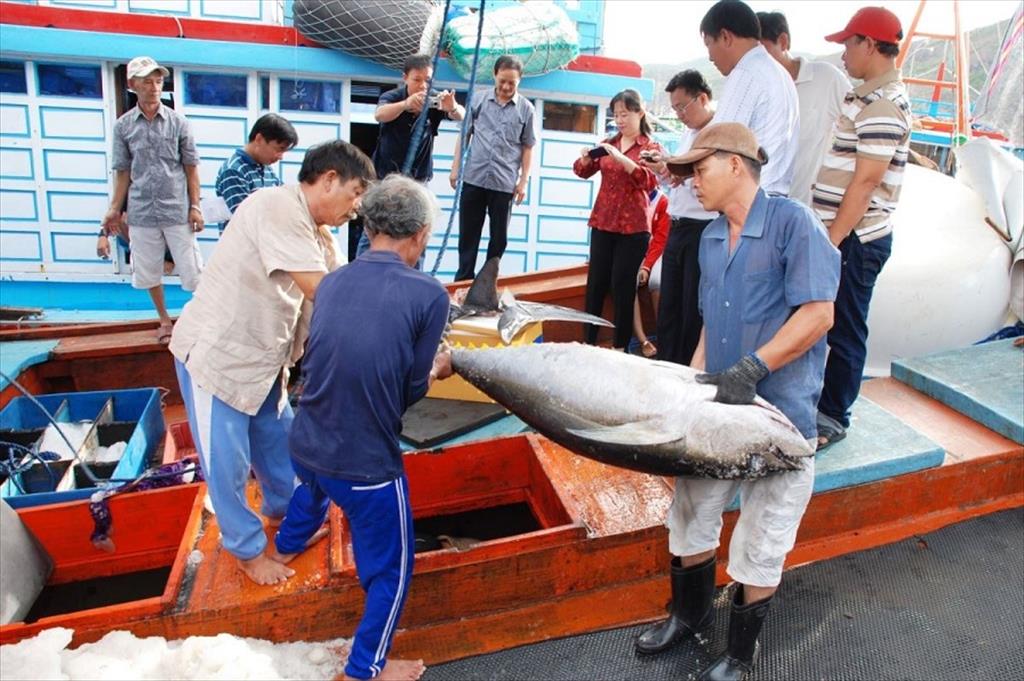(seafood.vasep.com.vn) In 2020, Vietnam's seafood exports brought in $ 8.4 billion, down 1.9% from 2019, of which farmed seafood (shrimp, pangasius) accounted for 62% with $5.2 billion, capture fisheries accounted for 38% with US$ 3.2 billion.

Covid-19 epidemic affected to seafood exports
In 2020, world seafood production and trade has been severely affected by the Covid epidemic. The stressful Covid-19 epidemic in key import markets of Vietnam such as the EU, the US, China, Korea and Japan has had a significant impact on Vietnam's seafood trade with other countries.
Vietnam's seafood exports in the first quarter and second quarter of 2020 decreased by 10% and 7%, respectively, compared to the same period in 2019. In which, exports decreased the most in March and May (down 48% and 16% respectively over the same period in 2019). Those were the peak months of Covid's epidemic in Europe and America.
However, since July, exports started to recover and increase in the third quarter (with a growth rate of 10% to 13%), which shows that seafood companies in Vietnam are adapting, overcoming the challenge. and seizing opportunities in the context of the Covid epidemic still booming around the world.
In the fourth quarter, although the import demand of the markets was still good, the seafood trade was deadlocked because of the lack of empty containers to load goods for export to countries and the cost of transport has increased many times, causing export activities to stall and declines.
Besides, Covid pandemic changed the consumption trend in markets: reducing the consumption of service channels, restaurants, hotels, increasing consumption at supermarkets and retail channels. Vietnamese pangasius exported to main markets is mainly consumed in service and canteens segments. Meanwhile, shrimp with different species and sizes and types of products and processing methods are still suitable for consumption in supermarkets and retail segments, suitable for home processing in times of social separation. The same situation went for some marine products. Therefore, there are many Vietnamese products that still exported well such as: frozen and processed whiteleg shrimp, marine shrimp, canned tuna and marine fish, fish sauce, and dried seafood such as fish and squid,octopus, other processed products, instant products, products with a long shelf life ...
In the domestic market, after more than a month of increase, the price of pangasius in the first half of December 2020 has decreased again because in recent days, many businesses have temporarily reduced the purchase of pangasius materials due to expor slowing down, affected by Covid-19.
Pangasius material prices in the Mekong Delta provinces in December 2020 fluctuated around 19,000 - 20,000 VND/kg for pangasius grade I, down 2,500 VND/kg compared to the previous month.
In the last months of 2020, the market for raw shrimp in the Mekong Delta was still stable when the supply was limited and businesses are boosting the purchasing of raw materials for export demand for Christmas and New Year. In Bac Lieu, frozen black tiger shrimp sized 20, 30 pc/kg increased by VND 5,000/kg compared to November, respectively to VND 195,000 - 220,000/kg, shrimp size 40 kept at VND 150,000 /kg. The price of whiteleg shrimp of size 60, 70 kept at VND 110,000 - 115,000 /kg, shrimp size 100 increased VND 8,000 /kg to VND 90,000/kg.
In 2021, the seafood trade situation will still be strongly affected by this pandemic, even this is still the main factor that dominates Vietnam's trend of seafood import and export.
However, in 2020, while the main producing countries such as India, China and some Asian and American countries were heavily affected by the Covid epidemic, the output of Vietnamese seafood has decreased sharply. By 2021, it is hoped that Vietnam will maintain its competitive advantage in raw material supply compared to other countries.
Seafood exports in 2021 expected to recover
In 2021, although the source of raw materials for production may be stable, the Covid epidemic is still serious in the world, and will continue to affect global supply chains and commodity trading, including seafood. Vietnamese seafood enterprises can flexibly adjust their export products to suit the changing trend of the market. Accordingly, products such as whiteleg shrimp, canned fish, dried fish, and processed seafood will be more concentrated for production and export.
In the first quarter of 2021, Vietnam's seafood exports could not recover. Exports can only recover gradually from the second quarter if the Covid epidemic is not too serious, affecting the logistics for export such as the shortage of containers for shipment in the last 2 months of 2020. Exports in the third and fourth quarters are likely to grow positively as in 2020.
With the above forecast, the country's seafood export in 2021 will reach about US$8.8 billion, up 4.7% compared to 2020.